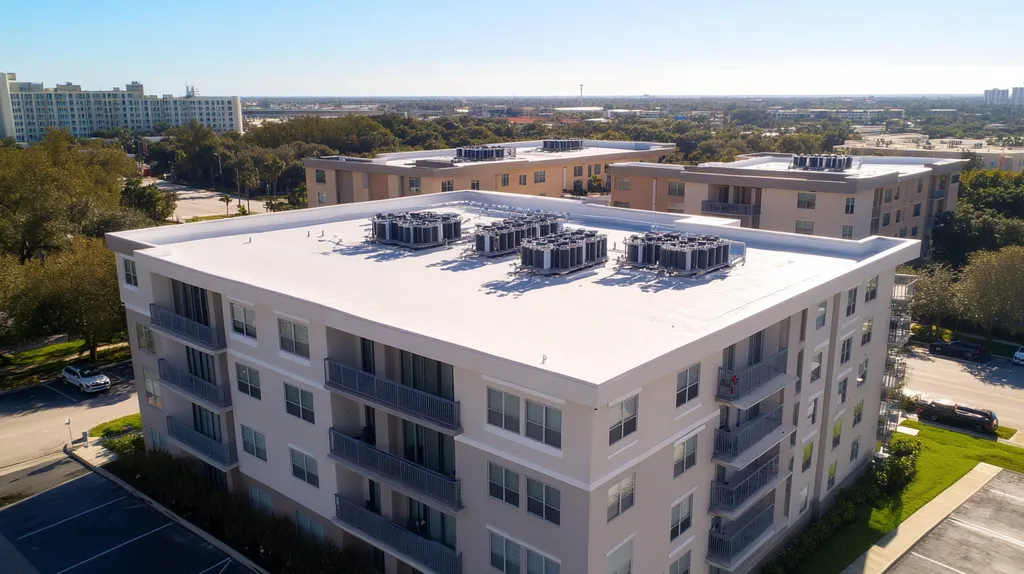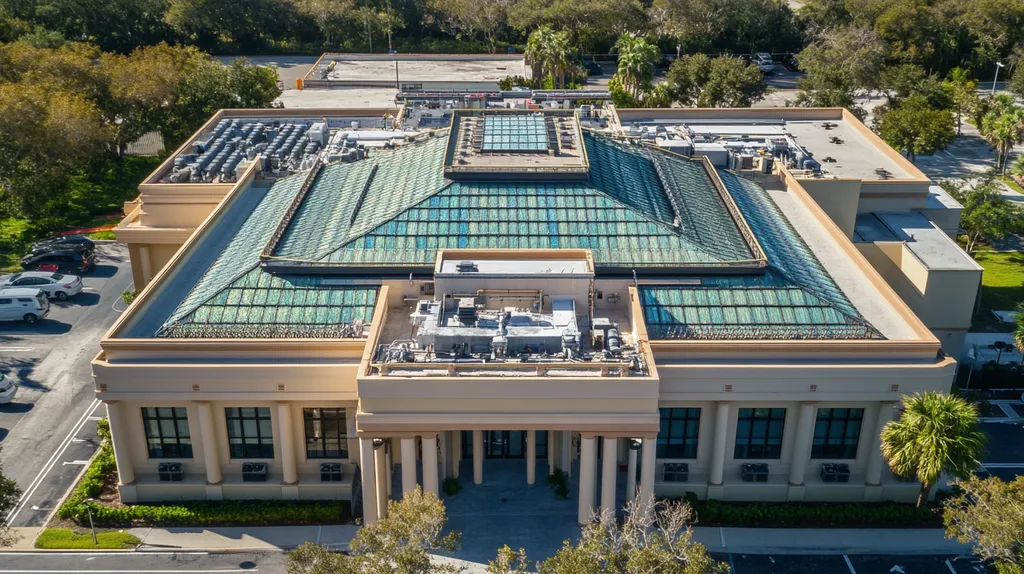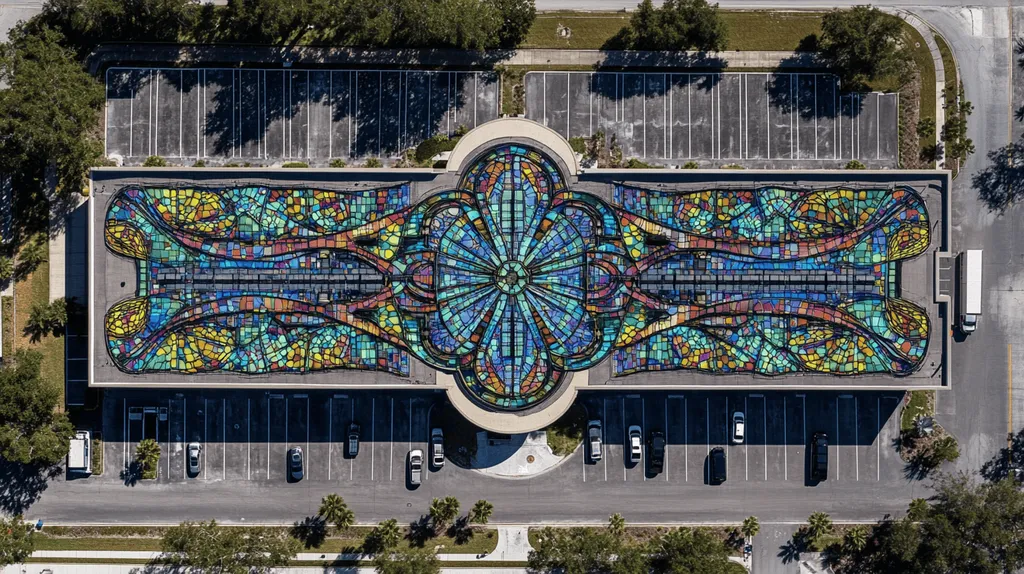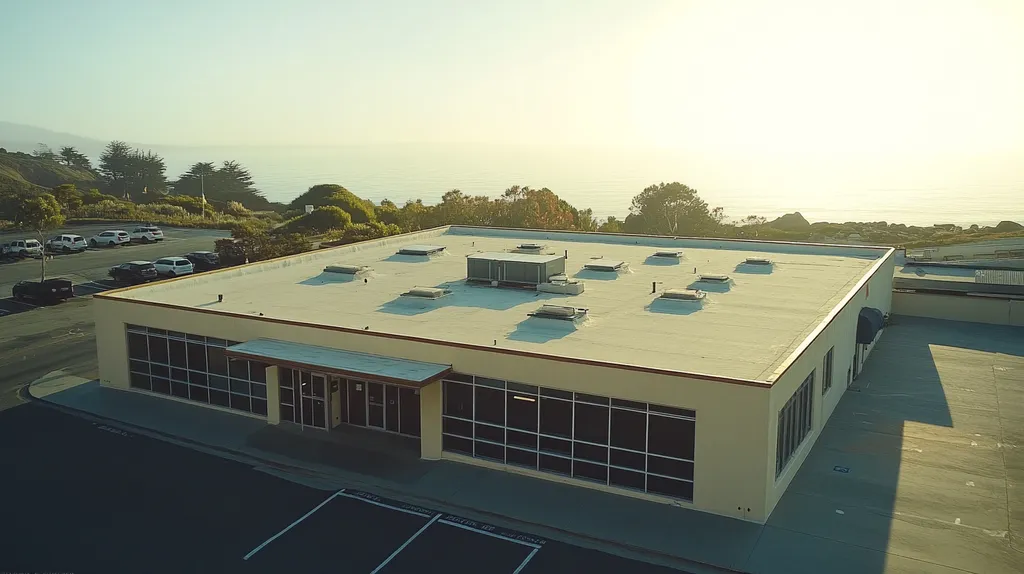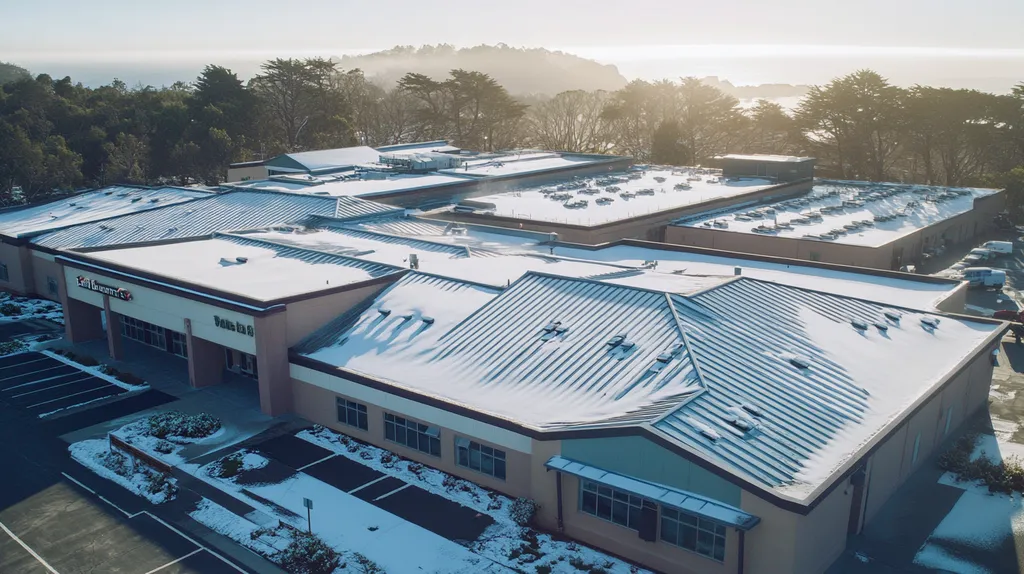Every year, more than 100 workers lose their lives due to preventable roofing accidents, with falls remaining the leading cause of fatalities in construction. For facility managers, establishing clear safety violation reporting protocols isn’t just about compliance—it’s about saving lives.
This comprehensive guide outlines the critical steps for identifying, documenting, and addressing roof safety violations while ensuring worker protection remains paramount. From performance factors to financial implications, we’ll explore the essential components of an effective reporting system.
Understanding these protocols helps facility managers create safer work environments while protecting their organizations from costly liability issues and regulatory penalties.
SECTION 1: PERFORMANCE FACTORS
The safety of personnel working on roofs represents a crucial responsibility for facility managers. With falls contributing to over 30% of all construction-related fatalities, the need to ensure optimal roofing conditions cannot be overstated. By focusing on three key performance factors—roof condition assessments, worker training, and equipment maintenance standards—organizations can significantly enhance safety and operational efficiency.
Roof Condition Assessment
Conducting a comprehensive roof condition assessment is essential for spotting potential hazards. Regular inspections should focus on identifying deterioration, leaks, and the overall structural integrity of the roof. For example, flat roofs may conceal pooling water, leading to structural failings if not promptly addressed.
Inadequate assessments can create perilous conditions for workers. By neglecting early identification of issues, facility managers risk severe consequences for employee safety. Inspectors must thoroughly document findings and proactively schedule necessary repairs to safeguard personnel.
Embracing innovative technology, such as drones, can enhance the assessment process. Drones can capture high-resolution images, facilitating detailed inspections without endangering workers. This approach promotes a culture of safety throughout the organization.
Recent industry statistics show that facilities carrying out regular assessments achieve up to a 40% reduction in safety incidents. Such data underscores the vital role that prioritizing roof integrity plays in protecting valued workers and assets.
Key Action Items
Worker Training and Competence
Ensuring that rooftop workers receive extensive training is fundamental to maintaining safety standards. This training should encompass the proper use of safety equipment, fall prevention techniques, and emergency response protocols. It’s crucial that workers learn how to utilize harnesses and other safety gear effectively.
Insufficient training is often a catalyst for preventable accidents. Ongoing educational programs can keep staff informed about best practices, while also enhancing their confidence when working at heights. Continuous learning cultivates a safer work environment.
Interactive training methods, such as simulation scenarios, can further empower workers. These hands-on experiences allow participants to practice responding to emergencies, leading to increased readiness for real-world situations.
Investing in employee training has also demonstrated a significant reduction in liability costs. Organizations that prioritize comprehensive education not only comply with regulations but also highlight their commitment to a safer workplace.
Key Action Items
Equipment Maintenance Standards
Regular maintenance of safety equipment plays a crucial role in ensuring worker safety. Routine inspections of harnesses, ladders, and scaffolding are essential to preventing malfunctions that may lead to accidents. For instance, worn or frayed harness ropes can jeopardize worker safety.
Implementing structured maintenance schedules guarantees that all equipment remains in top working condition. Organizations should maintain records of inspections and repairs, which are essential for demonstrating compliance during safety audits.
Neglecting equipment maintenance can result in severe financial and physical consequences. Proactive attention to maintenance not only decreases the likelihood of accidents but also cultivates a safer working environment for all staff.
Studies indicate that effective equipment maintenance can enhance productivity by as much as 25%. This figure demonstrates that investing in safety systems directly correlates with improved operational efficiency.
Key Action Items
SECTION 2: FINANCIAL CONSIDERATIONS
Addressing roof safety violations is critical not only for the wellbeing of workers but also for the financial health of any facility. Research indicates that business losses linked to safety-related incidents can average around $1 million annually. This underscores the importance of prioritizing roof safety—not just for compliance, but for protecting workers and ensuring financial stability. Understanding the ramifications of safety violations, planning appropriate budgets for safety equipment, and navigating insurance implications are key steps in maintaining a secure and financially viable roofing system.
Cost of Safety Violations
The financial toll resulting from safety violations can be staggering. Beyond compliance fines, facilities may incur hefty repair bills when safety breaches result in accidents or property damage. For instance, a single fall-related incident could lead to medical expenses and fines that may total thousands of dollars.
Furthermore, safety violations can interrupt normal operations, causing lost productivity and project delays. Facilities might have to cease operations temporarily or incur overtime costs for compliance efforts. Such financial drains can add up rapidly.
Additionally, organizations that overlook safety compliance often see a dip in employee morale, leading to higher turnover rates. The costs associated with recruiting and training new staff further burden facility budgets. Therefore, investing in roof safety not only mitigates risks but also enhances operational efficiency and team morale.
Key Action Items
Budgeting for Safety Equipment
Proper budgeting for essential safety equipment is crucial for any property owner focused on maintaining safe rooftop work environments. Items like safety harnesses, guardrails, and fall arrest systems are vital for accident prevention. Lacking funding for these tools can lead to preventable accidents and potential lawsuits.
Conducting a detailed risk assessment can help identify what safety equipment is necessary, with costs varying depending on the required measures. For example, allocating around $5,000 for safety gear could save hundreds of thousands in future liabilities.
Include ongoing training costs within the budget to ensure staff know how to use safety equipment correctly. Frequent training sessions keep safety top of mind and reinforce compliance. By investing wisely in safety gear and training, property owners promote a culture of safety and operational reliability.
Key Action Items
Insurance Implications of Violations
Roof safety violations can significantly affect insurance coverage and premiums. After a claim tied to a safety breach, insurers may increase premiums, leading to increased costs for property owners. In severe cases, coverage might be denied if violations are deemed willful or negligent.
Additionally, facilities lacking comprehensive safety protocol documentation may struggle during claims processing. Insufficient records might impede the ability to secure appropriate compensation after an incident. Thus, maintaining up-to-date records of safety equipment and inspections can minimize these risks.
Diligently addressing safety violations enhances workplace safety and fosters positive relationships with insurers. By consistently meeting safety standards, property owners demonstrate a commitment to risk management, which often translates into lower premiums and better coverage options. Investing in safety truly serves to benefit the entire organization.
Key Action Items
SECTION 3: COMPLIANCE REQUIREMENTS
Prioritizing roof safety is not merely advisable; it is a legal obligation dictated by a range of regulations. In jurisdictions nationwide, non-compliance with safety regulations can result in severe penalties and significantly increase the risk of workplace accidents. Facility managers must adeptly navigate OSHA regulations, state and local safety codes, as well as effective documentation practices to maintain high safety standards.
OSHA Regulations and Standards
The Occupational Safety and Health Administration (OSHA) establishes crucial regulations governing roofing safety practices. These standards require employers to provide a safe working environment, which includes implementing essential safety measures for workers on roofs. Common violations often stem from the improper use of fall protection equipment and inadequate safety training.
Facility managers must grasp these regulations thoroughly. For instance, OSHA mandates the installation of guardrails, safety nets, or personal fall arrest systems for any work performed on roofs at heights greater than six feet. Ignoring these requirements may lead to not just accidents, but also significant fines and legal ramifications.
Regular training in OSHA standards is imperative to ensure all personnel are well-versed in safety protocols. Managers should conduct frequent updates and training sessions to promote compliance and cultivate a strong safety culture. This proactive strategy not only prevents violations but also builds trust and accountability among the workforce.
Key Action Items
State and Local Safety Codes
In addition to federal regulations, state and local safety codes are pivotal in ensuring roof safety compliance. These codes can vary greatly and may impose stricter requirements than OSHA standards. Facility managers must be well-acquainted with the specific regulations that apply to their locales.
For instance, some states might require additional safety systems, like safety harnesses or unique fall protection measures, for specific roofing projects. It’s also crucial that roofing contractors hired meet local licensing requirements; failure to do so could result in work stoppages or legal issues.
Non-compliance with local codes can yield penalties and project interruptions. Therefore, continuous communication with local building authorities and selecting knowledgeable contractors can greatly assist in navigating these regulatory complexities. Understanding these local codes not only safeguards the facility but also ensures roofing projects are completed without hitches.
Key Action Items
Documentation and Record Keeping
Accurate documentation is a fundamental aspect of complying with safety regulations. Facility managers are responsible for maintaining comprehensive records of safety training, inspections, and incidents that occur on roofs. These documents not only serve as crucial evidence during inspections but also in case of disputes.
Documentation must encompass safety protocols implemented, attendance at training sessions, and any recorded incidents or near misses. Keeping this information organized allows for the identification of trends and areas that may need improvement. Regular reviews of documentation will help enhance safety measures over time.
Beyond meeting legal requirements, effective record-keeping highlights a commitment to safety. In the event of accidents, having thorough documentation can mitigate liabilities and demonstrate due diligence to regulatory agencies. Establishing a systematic approach to record keeping benefits both compliance and overall workplace safety.
Key Action Items
SECTION 4: RISK MANAGEMENT
Roofing hazards present serious risks that can jeopardize worker safety and disrupt operations. Notably, falls account for nearly one-third of fatalities in construction. To effectively manage these risks, facility managers must take proactive measures to identify hazards, implement protective strategies, and develop comprehensive emergency response plans. This section highlights these essential risk management components to promote safe roofing practices.
Identifying Potential Hazards
The foundation of a robust risk management plan is the identification of potential hazards on rooftops. Common threats such as uneven surfaces, slippery materials, and unsecured roof edges must be monitored closely. Facility managers should conduct regular inspections to detect these issues before accidents occur.
Using checklists can streamline the inspection process and ensure no hazard goes unchecked. Key observations should include indications of wear on roofing materials, improperly secured ladders, or areas with inadequate drainage.
Engaging employees in hazard identification fosters a culture of safety. By training workers to recognize and report unsafe conditions, facility managers can significantly minimize risks and enhance overall safety for everyone involved.
Key Action Items
Implementing Fall Protection Measures
After identifying potential hazards, the next critical step is implementing effective fall protection measures. This can involve the installation of guardrails, safety nets, or personal fall arrest systems, which are vital in reducing the risk of falls while employees work at heights.
Additionally, establishing and communicating clear safety protocols is essential. Training employees on the correct use of fall protection gear and scheduling regular refreshers ensures that everyone understands their responsibilities in maintaining safety.
Furthermore, it’s important for facilities managers to routinely evaluate the effectiveness of current safety measures. Are additional protections necessary based on new risks? Continuous assessment enables proactive adjustments to enhance worker safety significantly.
Key Action Items
Emergency Response Planning
An effective emergency response plan is crucial for reducing risks during roofing activities. This plan should detail the necessary steps to address falls or other accidents that may occur, emphasizing quick action to mitigate injury severity.
Facility managers should conduct regular drills to ensure all employees are well-versed in emergency procedures. Whether the situation requires calling for medical assistance or evacuating the site, preparedness is key to an effective response.
Moreover, maintaining readily accessible and stocked first-aid kits, along with emergency tools, empowers employees to act swiftly in case of incidents. Regularly reviewing emergency plans, especially in light of new hazards, reinforces a safety-first approach and helps protect workers while ensuring operational continuity.
Key Action Items
SECTION 5: OPERATIONAL PROCEDURES
Maintaining a safe working environment on roofs is vital to preventing accidents and safeguarding lives. Studies reveal that falls from roofs are a significant contributor to construction-related injuries. By implementing a clear and structured approach to operational procedures, facility managers can effectively reduce these risks. This section focuses on essential pre-work safety checks, vigilant monitoring during work, and thorough post-work site cleanup and inspections.
Pre-Work Safety Checks
Before any rooftop work begins, it’s critical to conduct comprehensive safety checks. This evaluation should assess the roof’s structural integrity and identify hazards such as loose materials or weak points. Facility managers must ensure that only authorized personnel have access to the work area and that it is clearly marked to prevent unauthorized entry.
All workers should be equipped with proper personal protective equipment (PPE), including helmets, harnesses, and non-slip footwear. Regular inspections of this equipment can help identify any wear or defects before work commences, preventing potential accidents.
A meticulous checklist should be prepared and signed by both facility managers and workers, establishing accountability and providing a record that can protect against future liability. Finally, pre-work meetings must clearly communicate safety protocols and ensure that all personnel know the specific risks associated with the task at hand.
Key Action Items
During-Work Monitoring and Reporting
Effective monitoring during work operations is essential for ensuring ongoing safety. Designated safety personnel should conduct regular walkarounds to observe compliance with all safety protocols, providing immediate intervention for any unsafe actions. Their presence acts as a key deterrent against risky behaviors.
A robust reporting system should be established to facilitate real-time communication regarding safety violations. Workers must feel confident and empowered to report unsafe conditions without the fear of retaliation, fostering a culture of responsibility and accountability.
Additionally, leveraging technology like drones or safety cameras can help monitor difficult-to-see areas, enhancing oversight. Regular safety briefings throughout the workday serve to reinforce safety protocols and remind workers of their importance, creating an environment that prioritizes safety as a core value.
Key Action Items
Post-Work Site Cleanup and Inspection
Following the completion of work, a thorough inspection and cleanup process is essential. This step ensures that no tools, materials, or hazards remain on the roof, minimizing risks for future maintenance staff. Failing to perform this cleanup can lead to accidents or injuries later on.
A designated safety officer should conduct the final inspection to confirm that the site is secure, ensuring all tools and safety equipment are properly stored. Any new hazards that arose during the work should be documented thoroughly, maintaining a record that establishes accountability.
Engaging team members in feedback discussions can provide valuable insights into the effectiveness of safety measures implemented during the project. These discussions promote a culture of continuous improvement and foster open communication about safety practices.
Key Action Items
SECTION 5: OPERATIONAL PROCEDURES
Ensuring a safe working environment on roofs is critical for preventing accidents and protecting lives. Statistics show that falls from roofs contribute significantly to construction-related injuries. By adopting a systematic approach to operational procedures, facility managers can effectively reduce these risks. This section will cover essential pre-work safety checks, vigilant monitoring during work, and thorough post-work site cleanup and inspections.
Pre-Work Safety Checks
Before any work begins, a thorough assessment of the roof is essential. This evaluation should include checks for structural integrity and identifying hazards such as loose materials or weak points. Facility managers must restrict access to the work area, clearly marking it to ensure only authorized personnel can enter.
Proper personal protective equipment (PPE), including helmets, harnesses, and non-slip footwear, should be inspected and issued to every worker. Regular equipment checks help identify wear or defects that could lead to dangerous situations.
Documentation is vital during pre-work safety checks. A detailed checklist should be created and signed by both facility managers and workers, establishing accountability and providing a safeguard against potential liabilities in future incidents.
Pre-work meetings must clearly communicate safety protocols so that all personnel are aware of specific risks related to the project and understand appropriate emergency responses.
Key Action Items
During-Work Monitoring and Reporting
Ongoing monitoring during work operations is essential for maintaining safety. Designated safety personnel should regularly walk the site to ensure compliance with safety protocols, providing immediate intervention for unsafe actions. Their presence serves as a deterrent to risky behaviors.
Establishing a robust reporting system encourages real-time communication about safety violations. Workers must feel empowered to report unsafe conditions without fear of retaliation, fostering collective responsibility for safety.
Incorporating technology, such as drones or safety cameras, can significantly enhance monitoring of difficult-to-see areas, increasing oversight and providing evidence in the event of safety practice disputes.
Conducting periodic safety briefings throughout the workday reinforces safety protocols and reminds workers of their importance, creating a proactive safety management culture.
Key Action Items
Post-Work Site Cleanup and Inspection
After work is completed, a thorough inspection and cleanup are crucial. This step ensures no tools, materials, or hazards remain on the roof, significantly reducing risks for future maintenance personnel.
A designated safety officer should conduct a final inspection to verify site security, ensuring that all safety equipment is properly stored and identifying any new hazards that may have arisen during work. Documenting this final review adds another layer of accountability.
Facilitating feedback sessions with team members can yield valuable insights into the effectiveness of safety measures used during the project. Open discussions can lead to continual improvements in procedures and risk reduction.
A final debriefing with all involved personnel helps disseminate learnings from the workday. This openness reinforces the commitment to a safe work environment and encourages a culture of continuous safety enhancement.
Key Action Items
Moving Forward
With over 100 annual deaths from preventable roofing accidents, the need for robust safety violation reporting has never been more critical.
This comprehensive guide demonstrates that effective reporting protocols require a multi-faceted approach spanning performance monitoring, financial planning, and regulatory compliance.
By implementing thorough pre-work assessments, maintaining vigilant oversight during operations, and conducting detailed post-work inspections, facility managers can significantly reduce workplace accidents and associated costs.
Most importantly, establishing clear documentation procedures and fostering a culture where workers feel empowered to report violations creates an environment where safety becomes everyone’s priority.
The cost of ignoring these protocols isn’t just financial – it’s measured in human lives. For facility managers, the time to act is now.
FREQUENTLY ASKED QUESTIONS
Q. What are the key performance factors for a commercial roof?
A. Key performance factors include conducting regular roof condition assessments, providing thorough worker training, and adhering to strict equipment maintenance standards. These measures help ensure personnel safety and operational efficiency while preventing potential hazards.
Q. How do safety violations impact budgets for an industrial roof?
A. Safety violations can lead to significant financial repercussions, including compliance fines and increased repair costs. They may also cause lost productivity and lead to higher turnover rates due to decreased employee morale, which further strains facility budgets.
Q. What OSHA regulations must facility managers follow for commercial roofs?
A. Facility managers must adhere to OSHA regulations that require safe working conditions, including proper use of fall protection equipment. Compliance includes installing guardrails for work over six feet high and ensuring continued worker education on safety protocols.
Q. How can I identify potential hazards on an industrial roof?
A. To identify hazards, conduct regular inspections focusing on uneven surfaces, slippery materials, and unsecured roof edges. Utilize checklists for thorough inspections and encourage staff participation in reporting unsafe conditions to minimize risks.
Q. What steps should I take for pre-work safety checks on a commercial roof?
A. Conduct safety inspections assessing structural integrity, restrict access to authorized personnel, and ensure all workers wear proper PPE. Document these checks and hold pre-work meetings to communicate safety protocols for upcoming tasks.
Q. How can facility managers monitor roof safety during work?
A. Ongoing monitoring involves designated personnel conducting regular inspections and immediate interventions if unsafe actions occur. Establishing a reporting system encourages workers to communicate safety violations and utilizing technology can enhance oversight of difficult-to-see areas.
Q. What should be included in an emergency response plan for roofs?
A. An emergency response plan should detail steps for addressing falls or accidents, conducting regular drills and maintaining accessible first-aid kits. Keeping emergency contacts visible and updating plans as needed reinforces worker preparedness and safety.

